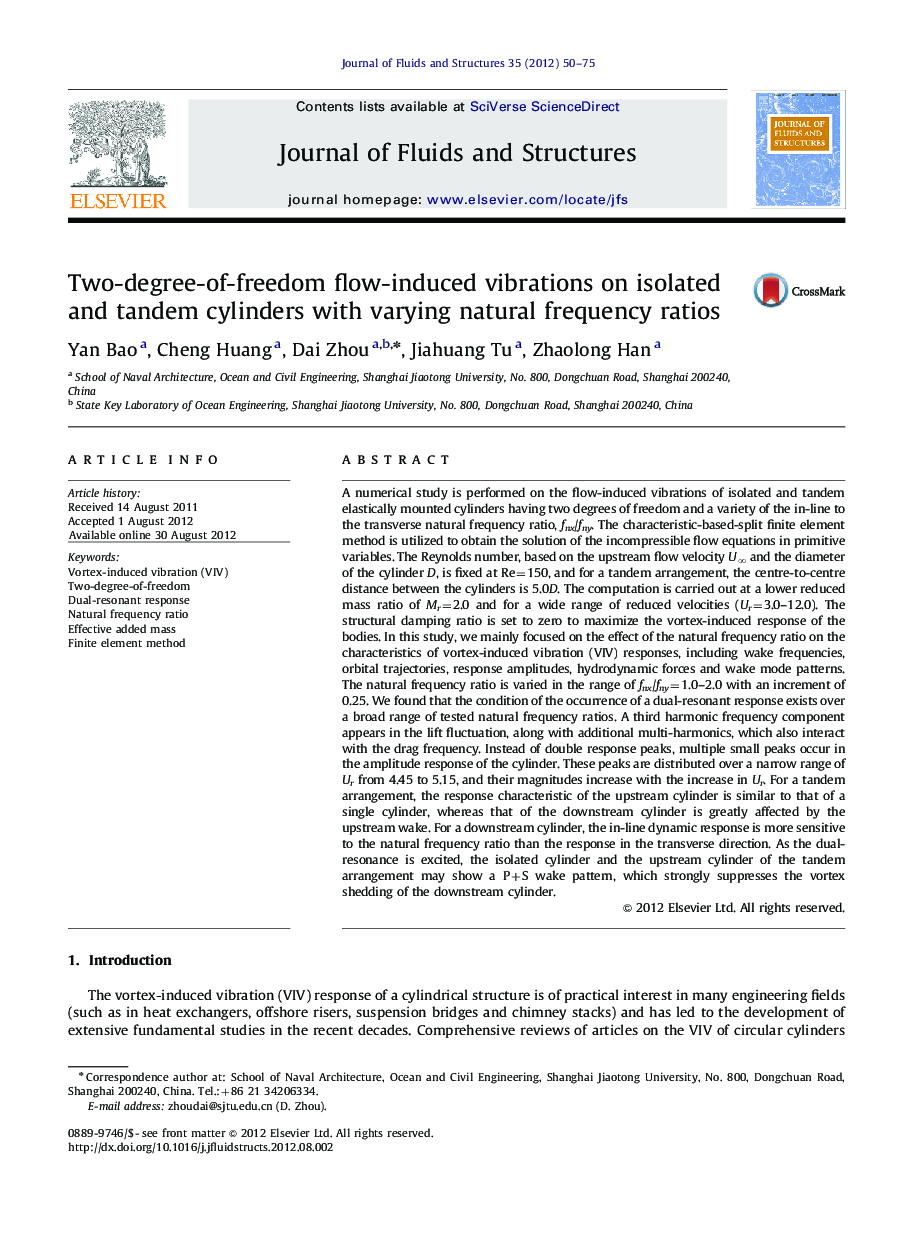| Article ID | Journal | Published Year | Pages | File Type |
|---|---|---|---|---|
| 793817 | Journal of Fluids and Structures | 2012 | 26 Pages |
A numerical study is performed on the flow-induced vibrations of isolated and tandem elastically mounted cylinders having two degrees of freedom and a variety of the in-line to the transverse natural frequency ratio, fnx/fny. The characteristic-based-split finite element method is utilized to obtain the solution of the incompressible flow equations in primitive variables. The Reynolds number, based on the upstream flow velocity U∞ and the diameter of the cylinder D, is fixed at Re=150, and for a tandem arrangement, the centre-to-centre distance between the cylinders is 5.0D. The computation is carried out at a lower reduced mass ratio of Mr=2.0 and for a wide range of reduced velocities (Ur=3.0–12.0). The structural damping ratio is set to zero to maximize the vortex-induced response of the bodies. In this study, we mainly focused on the effect of the natural frequency ratio on the characteristics of vortex-induced vibration (VIV) responses, including wake frequencies, orbital trajectories, response amplitudes, hydrodynamic forces and wake mode patterns. The natural frequency ratio is varied in the range of fnx/fny=1.0–2.0 with an increment of 0.25. We found that the condition of the occurrence of a dual-resonant response exists over a broad range of tested natural frequency ratios. A third harmonic frequency component appears in the lift fluctuation, along with additional multi-harmonics, which also interact with the drag frequency. Instead of double response peaks, multiple small peaks occur in the amplitude response of the cylinder. These peaks are distributed over a narrow range of Ur from 4.45 to 5.15, and their magnitudes increase with the increase in Ur. For a tandem arrangement, the response characteristic of the upstream cylinder is similar to that of a single cylinder, whereas that of the downstream cylinder is greatly affected by the upstream wake. For a downstream cylinder, the in-line dynamic response is more sensitive to the natural frequency ratio than the response in the transverse direction. As the dual-resonance is excited, the isolated cylinder and the upstream cylinder of the tandem arrangement may show a P+S wake pattern, which strongly suppresses the vortex shedding of the downstream cylinder.
